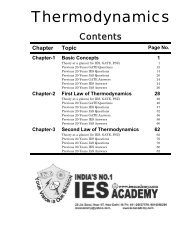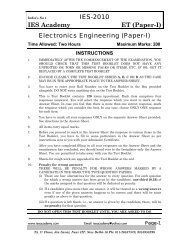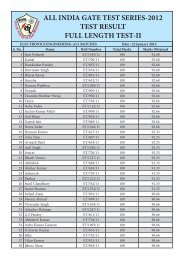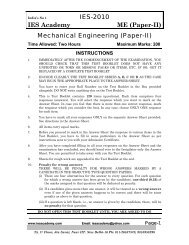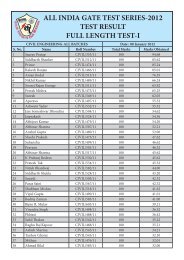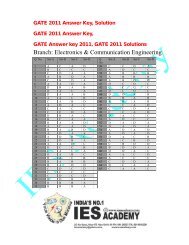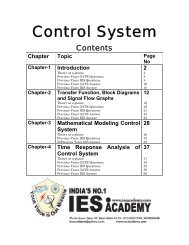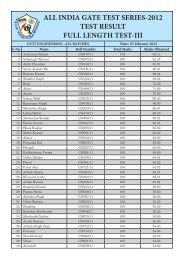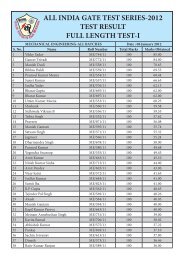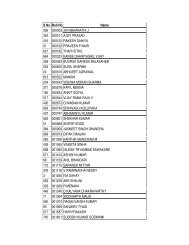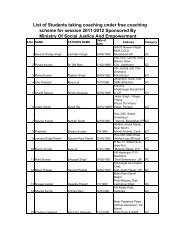Electrical Machine - IES Academy
Electrical Machine - IES Academy
Electrical Machine - IES Academy
Create successful ePaper yourself
Turn your PDF publications into a flip-book with our unique Google optimized e-Paper software.
India’s No. 1<br />
<strong>IES</strong> <strong>Academy</strong><br />
Transformer<br />
Chapter-1<br />
Star connection is formed on primary side by connecting together 1 suffixed terminals; 2<br />
suffixed terminals being connected to appropriate lines; the delta is formed by connecting c 1<br />
a 2<br />
,<br />
a 1<br />
b 2<br />
and b 1<br />
c 2<br />
with the lines connected to these junctions being labelled as a, b and c<br />
respectively. The phasor diagram on the delta side shows that the sum of voltage around delta<br />
is zero. This is a must, as otherwise, closed delta would mean a short circuit. It is also<br />
observed from the phasor diagram that phase a to neutral voltage on the star side; this is also<br />
the phase relationship between the respective line-to-line voltage. This connection, therefore,<br />
is known as –30° - connection.<br />
Similarly ± 90°-connections are also possible in the star/delta connection by relabelling the<br />
delta side lines. For example for + 90° connection relabel c → a, b → c and a → b.<br />
Phase transformation ratio → x : 1<br />
Line transformation ratio → √3 : x<br />
Delta/Star (Δ/Y) Connection – (+30° and –30° connection<br />
are obtained)<br />
This connection is simply the interchange of primary and secondary roles in the star/delta<br />
connection. One just interchanges capital and small letter suffixings. Of course what was the –<br />
30°-connection will now be the + 30°-connection and vice versa. If the phase transformation<br />
ratio is x : 1 (delta/star), the transformation ratio for line quantities will be ( x / 3):1.<br />
Phase transformation ratio → x : 1<br />
Line transformation ratio → x/√3:1<br />
Delta/Zig-Zag Star (Δ/Y) Connection – (0° and 180°<br />
connection are obtained)<br />
Phase transformation ratio → x : 1<br />
Line transformation ratio → x : 3/2 or 2/3x:1<br />
Transformer Noise<br />
The hum, leading to noise, originates in the ferromagnetic core of a transformer. The major<br />
cause of noise in transformers is the magnetostriction. When ferromagnetic transformer core is<br />
magnetized, the core length along the alternating flux decreases and increases alternatively,<br />
www.iesacademy.com E-mail: iesacademy@yahoo.com Page-28<br />
25, 1 st Floor, Jia Sarai, Near IIT. New Delhi-16 Ph: 011-26537570, 9810958290




